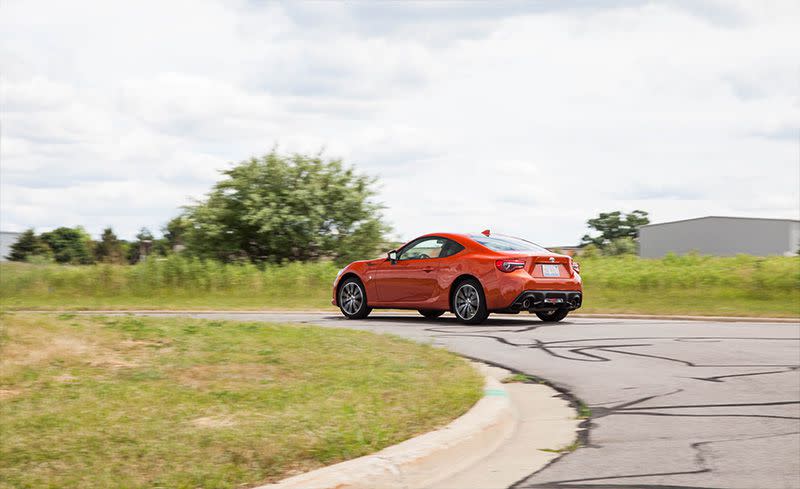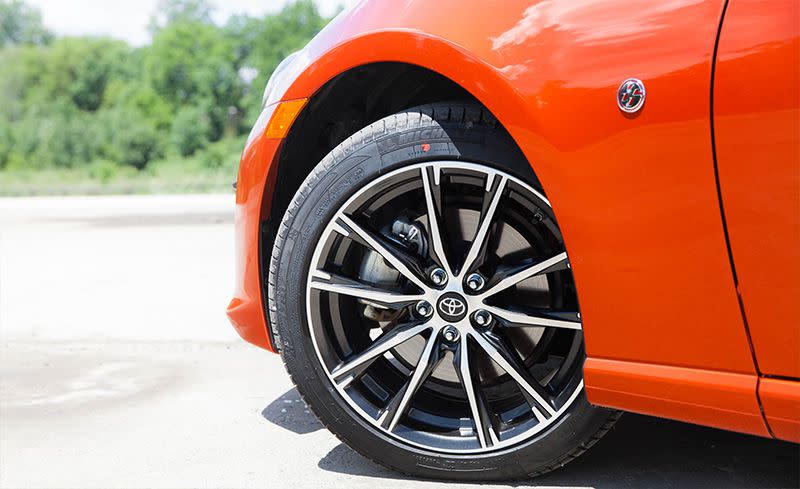Performance and Driving Impressions
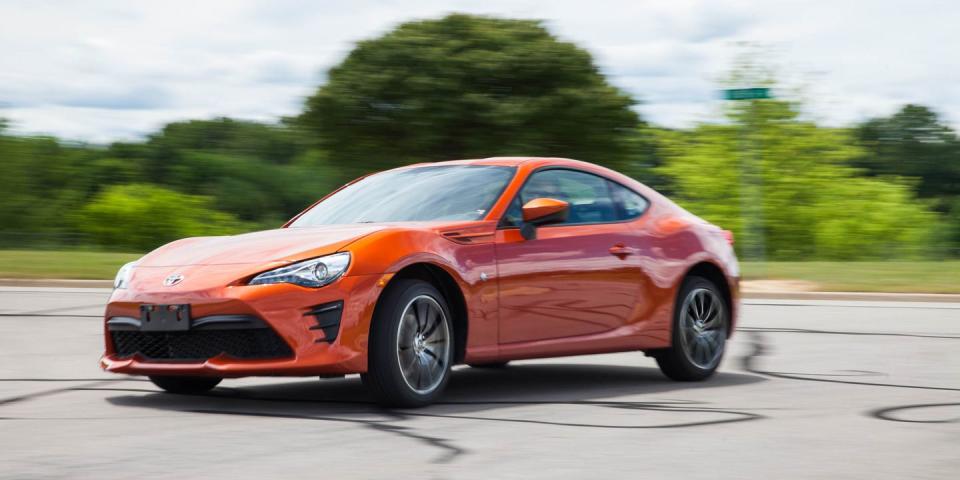
Performance and Driving Impressions Rating:

Despite its less than thrilling engine, the 86 delights with sharp handling, quick steering, and grip-challenged optional all-season tires that enable sideways antics at fairly low speeds. This rip-it-up hooligan side is the 86’s most appealing personality trait.
What’s New for 2018?
Nada. The 86 is mechanically unchanged for 2018, and we expect the same spirited driving experience as last year’s model.
2017 Toyota 86
Acceleration
Even with a class-leading 205 horsepower, the 86 is only the second quickest in this review and trails the 155-hp Mazda Miata to 60 mph. The Toyota’s disadvantage comes down to weight; the Mazda is some 400 pounds lighter. Keep in mind, however, that the 86 has a back seat and a fixed roof. Subjectively, the 86’s four-cylinder engine is not as smooth as the Miata’s. Its power delivery is, however, more linear than that of the turbocharged 1.4-liter four-cylinder in the Fiat 124 Spider. That car suffers from turbo lag, which gives the engine’s performance a surging quality.
Test Results: Acceleration
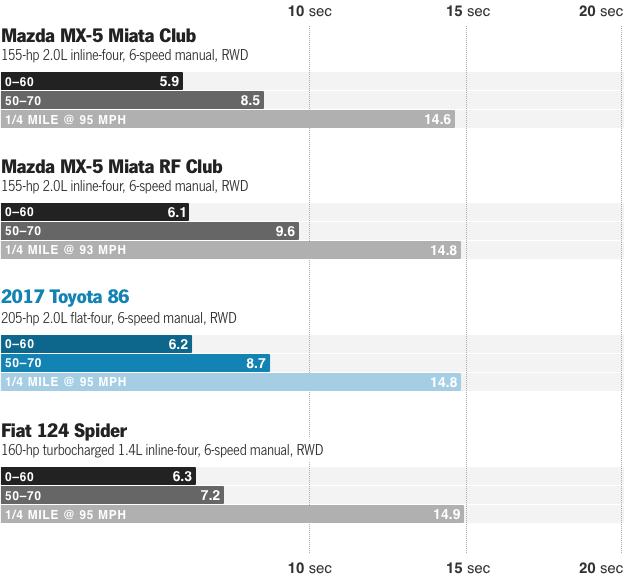
Ride, Handling, and Steering
Until this year, the 86-in its former life as the Scion FR-S-rode very firmly, and road impacts tended to reverberate throughout the body structure. For 2017, suspension updates have smoothed out the ride without compromising body control or handling, while a stiffer body shell does a better job of absorbing any brutal suspension impacts.
More fun to discuss and experience are the 86’s direct, quick-ratio steering and pleasing small-diameter steering wheel. Inputs at the wheel change the car’s direction with immediacy, and the body stays flat throughout corners and quick transitions. The neutral chassis balance initially gives overenthusiastic drivers understeer, which happens when the front tires slide toward the outside edge of the road, before transitioning to controllable oversteer-the feeling that the tail is sliding out from under you. For the skilled and adventurous, adding throttle in this situation can hang the tail way out in a major drift-if you’ve killed the stability control first. Three stability-control settings allow for ever increasing sideways silliness, from not much fun (full on) to a Track setting that allows more slip (getting warmer) to fully off (bro, you drift!). Oversteer is essentially the 86’s reason for being and a big part of its appeal.
Test Results: Maximum Cornering Capability
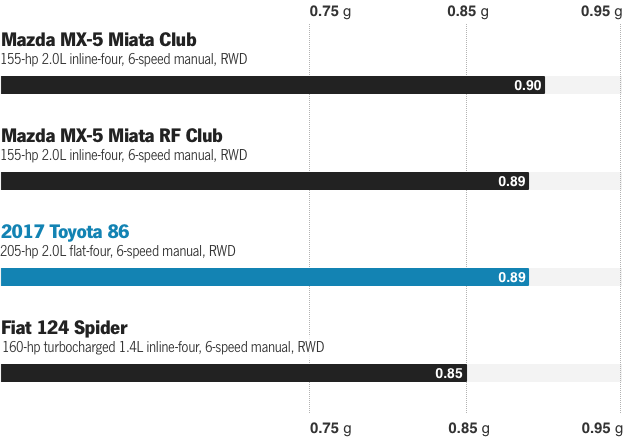
Braking
Toyota gets the 86’s brake-pedal feel right, as it has an appropriately firm, short stroke and offers immediate response to the driver’s inputs. The 86’s stopping distances are so-so for a sporting machine, hampered by the unaggressive tires Toyota specifies-but are still equivalent to the Miata’s.
Test Results: Maximum Braking Capability
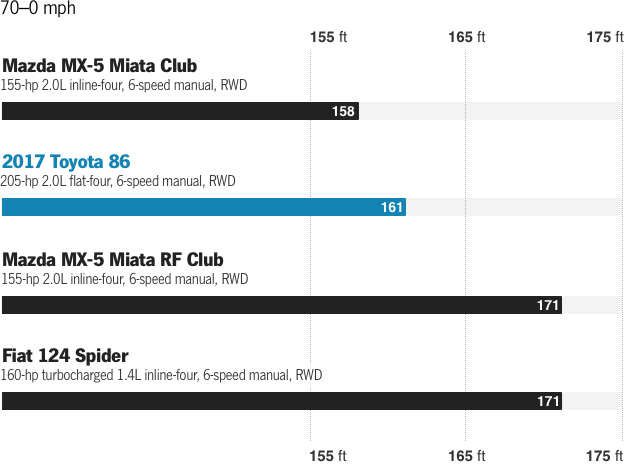
You Might Also Like

 Yahoo Autos
Yahoo Autos 